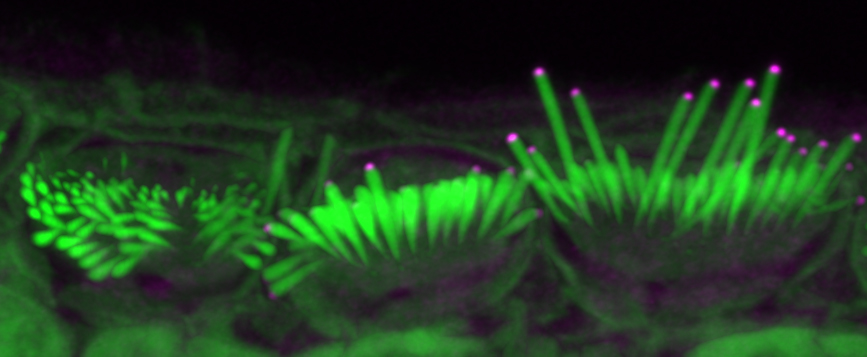Research Projects
Organelle-Cytoskeleton Interactions and Dynamics

Organelles such as mitochondria, lysosomes, endosomes, the endoplasmic reticulum, and the nucleus undergo dynamic changes to their function, shape, and position in response to different physiological needs and environmental cues. Disruption of proper organelle transport, morphology, and turnover can lead to myriad diseases including metabolic disorders, cancer, and neurodegeneration. The Manor Lab is developing and utilizing cutting-edge molecular, imaging, and computational tools to investigate the process by which organelles interact with one another and the actin cytoskeleton to maintain homeostasis in different model systems of health and disease, including patient-derived cells and in vivo animal models.
Deep Learning Based Imaging and Analysis methods


Even with the latest, greatest microscope technology in the world, there are still real-world limitations to the quality of data that can be acquired and analyzed. Experimentalists must constantly make painful decisions on whether they should sacrifice imaging speed, resolution, or sample damage.
Fortunately, deep learning-based computer vision algorithms have made it possible to restore low quality images with remarkable accuracy. Similarly, properly trained neural networks can now automatically detect, segment, and classify different features in image and video data. The Manor Lab is developing and leveraging these kinds of approaches to facilitate imaging experiments that would otherwise be impossible to perform.
Hearing loss and neurodegeneration

Both congenital and age-related hearing loss are extremely common: 1 in 400 children are born with some form of hearing loss, and the incidence of age-related hearing loss in humans doubles every 10 years over the age of 50 with roughly two-thirds of people over the age of 70 affected. Yet, no treatment has yet been established for restoring hearing function. Epidemiological studies show age-related hearing loss is associated with a 200-300% increased risk for age-related dementia. This highlights the enormous public health need for treating age-related hearing loss, and also offers an opportunity to better understand the mechanisms underlying neurodegeneration more broadly. The Manor Lab is engineering new models and tools for better understanding the cellular and molecular mechanisms underlying hearing loss, with the goal of developing promising avenues for restoring hearing function.

